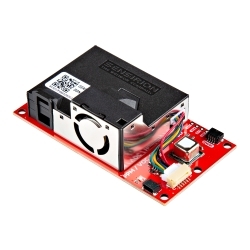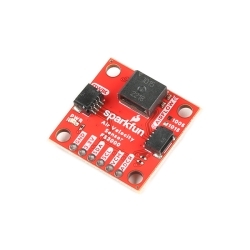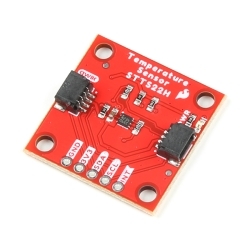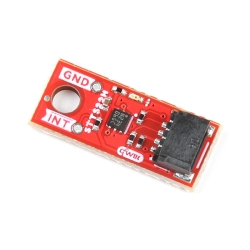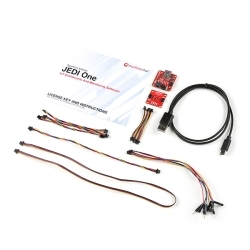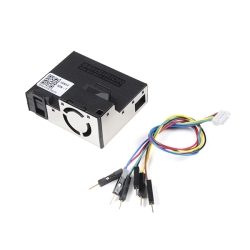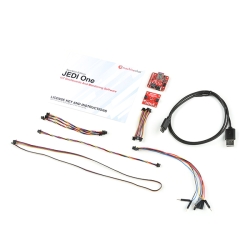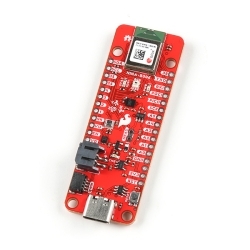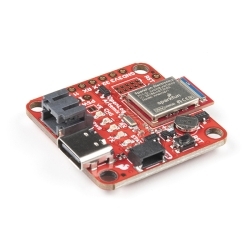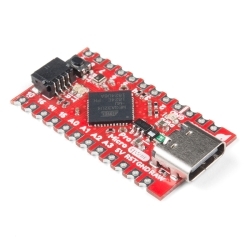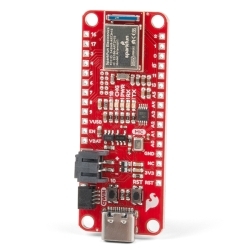SparkFun Air Quality Sensor - SGP40 (Qwiic)
The SparkFun SGP40 Air Quality Sensor provides a measurement of the quality of the air in your room or house.
Helpful Documentation
Product Overview
The SparkFun SGP40 Air Quality Sensor provides a measurement of the quality of the air in your room or house. The SGP40 is based on Sensirion's CMOSens® technology and uses a metal oxide (MOx) sensor with a temperature controlled micro hotplate and provides a humidity-compensated volatile organic compound (VOC) based indoor air quality signal. Both the sensing element and VOC Algorithm feature an unmatched robustness against contaminating gases present in real world applications enabling a unique long term stability as well as low drift and device to device variation.
The SGP40 does not return specific concentrations or VOC gases. Instead, it outputs a digital value based on common VOC gases present in an indoor environment and this value can be combined with Sensirion's VOC Index Algorithm to detect the relative intensity of VOC events in relation to the average readings in a 24hr period. Think of the SGP40 as a sensitive electronic nose for detecting VOCs in a room.
The SGP40 communicates via I2C so naturally we broke out the pins on the sensor to Qwiic connectors so you can easily connect it to SparkFun's ever growing Qwiic Ecosystem!
The SparkFun Qwiic Connect System is an ecosystem of I2C sensors, actuators, shields and cables that make prototyping faster and less prone to error. All Qwiic-enabled boards use a common 1mm pitch, 4-pin JST connector. This reduces the amount of required PCB space, and polarized connections mean you can’t hook it up wrong.
Features & Specs
- Uses I2C interface (Qwiic-enabled)
- I2C Address: 0x59
- 2x Qwiic connectors
- Operating voltage range:
- 1.7V - 3.6V (Typ. 3.3V)
- The Qwiic interface provides 3.3V
- Typical current consumption:
- 2.6mA during continuous operation (at 3.3V)
- 34µA when idle (heater off)
- Output signal:
- Digital raw value (SRAW): 0 - 65535 ticks
- Digital processed value (VOC Index): 0 - 500 VOC Index points
- Switch-on behavior:
- Time until reliably detecting VOC events: <60s
- Time until specifications are met: <1h
- Recommended sampling interval:
- VOC Index: 1s
- SRAW: 0.5s - 10s (Typ. 1s)
Customer Reviews

Stock and Customer Discounts
Available Discounts
- $18.00 | 10+ units
- $17.06 | 25+ units
- $16.11 | 100+ units

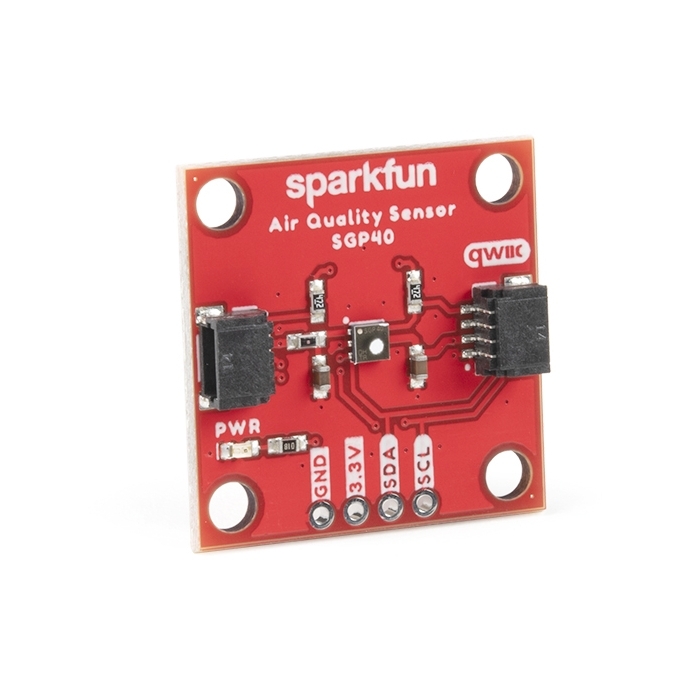
 Hookup Guide
Hookup Guide Schematic
Schematic Datasheet
Datasheet
